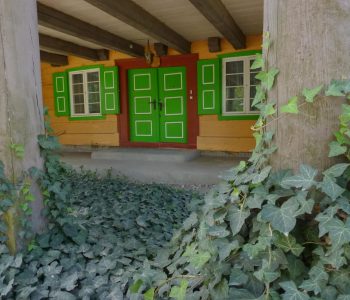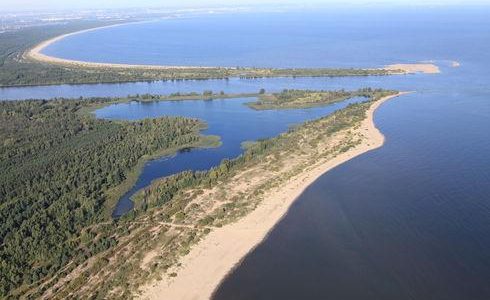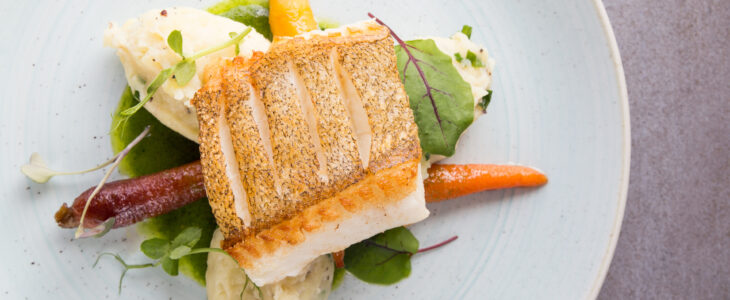Despite the fact that the traditional Kashubian costumes disappeared in the second half of the 19th Century, through the power of culture, we can today admire its reconstructed version. According to tradition, and out of respect for religion, Kashubians wore the holiday costume only during church celebrations, family events and festivals, while in weekdays they used everyday clothes.
One of the most characteristic elements of the men’s costume was the “kapuza”, a huge hat made of lamb’s leather, which in the summer was replaced with a straw hat. Russet coats were made in deep blue with creases in the back, and a long narrow belt and a red-edged collar constituted the outerwear. The russet coat was rather uncomfortable and impractical for everyday chores, so men replaced it with two-rowed waistcoats, under which they wore white linen shirts. The costume was complemented with sackcloth trousers. The most important element of the traditional men’s costume was shoes. They denoted the affiliation to a given social class and the level of affluence. Therefore, the most suitable shoes for a Sunday Mass were black leather shoes with long tops.
The most typical element of the women’s costume were woifs. These velvet marvels, called “złotnice”, decorated with traditional Kashubian embroidery, with the use of silk threads surrounded by fine golden or silver filament. Such masterpieces could be worn only by married women. Similar to shoes in the case of men, woifs designated women’s social status. The most expensive hats, made in cloisters in Żuków and Żarowiec, could be afforded only by the richest ladies. Ordinary women wore złotnice decorated with a golden or silver filament. Other elements of women’s clothing were long-sleeved linen shirts on which bodices were worn. The essential element of each woman’s clothing was broad-pleated skirts in deep blue, bronze or green.
The costume was complemented with an apron, silk on holidays, and linen on weekdays. In severe winters Kashubian women wore jupy and kabaty, i.e. warm jackets. It’s common knowledge that every woman likes ornaments, trinkets and beads. Kashubian women also decorated their clothes with beads made of amber or glass, they wore silver rings with amber stones, and covered their legs with white stockings and low shoes with bowknots.
Nowadays the fashion for folk elements of clothing has returned, and Kashubian costume is increasingly often used by people dealing with presenting tourist attractions in the region. The open-air village museum in Wdzydze Kiszewskie, the Centre for the Education and Promotion of the Region, or some accommodation facilities, are just of a few examples of places where guides or hosts wear the reconstructed version of Kashubian folk costume. Sometimes it is worth wearing something unconventional and going back to the distant past to feel what it was like without branded clothes and expensive jewellery, with only hand-made ornaments…














